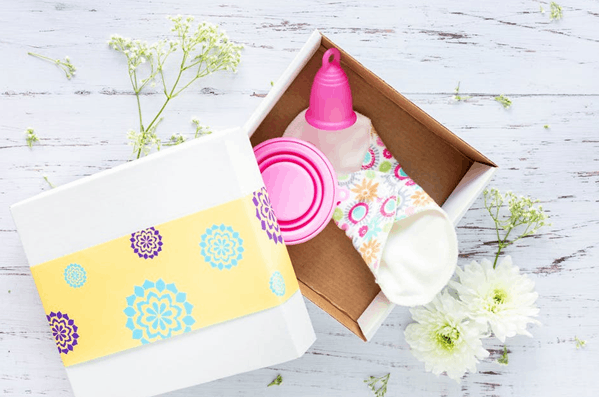
In the eastern culture way before the production of pads and tampons, women before do not only suffer from period cramps and discomfort they also burden themselves by making their own paddings. Women before look for spare cloth, cut it and sew it in a small regular shape to fit in their undergarments.
Besides from sewing it to its form, after using, they wash this improvised pads and mind you, blood stains from these homemade pads are not easily washed off even with detergent soap. Imagine making your own pads, washing stains off and then making one again. It requires a lot of hard work and patience to supply their needs as a woman.
Luckily in our generation, menstrual kit is very accessible. People have not stopped manufacturing options for women, for an easier and a more comfortable aid for women on their periods. In conservative countries, pads are widely used in beliefs to conserve virginity, but in liberated countries, the use of tampons have been used more and is viewed much more efficient.
Today, menstruation cups have been circling in the market, and the product has received a lot of good impacts because of its efficiency. So let’s discuss the advantages of using menstrual cup when compared to other period kits.
What is a Menstruation Cup?
Menstruation cup is somewhat like a tampon where you insert the feminine hygiene product inside your vagina. The first step is to pinch the opening of the cup so it can be easily inserted in the vagina. Upon placement, the cup automatically unfolds, and the opening of the cup prevents leakage.
Instead of absorbing the discharge like the purpose of traditional pads and tampons, the menstrual cup acts as a seal and collects the menstrual fluid. A menstrual cup is usually made up of medical grade silicone to combat any discomfort. Pads need to be changed every three hours while tampon should be changed every four hours, but the menstrual cup can stay inside the vagina for twelve hours before rinsing and cleaning it again.
The menstrual cup can be taken off by pulling down the stem gently. While both pads and tampons should only be used once and are needed to be disposed of right after using, menstruation cups can be reused again in a span of five years, thus a much Eco-friendlier solution. The cup is cleaned by removing the menstrual fluid, rinsing it with water and can readily be inserted again, it is advised to boil it for five minutes before storing it again to be used the next month.
Advantages of Menstrual Cup
A menstrual cup is much safer than tampons. A person could be at risk of Toxic Shock syndrome if the tampon overstayed inside the vagina. Pads can also cause Urinary Tract Infection if not regularly changed.
It holds more menstrual fluid than tampons. Tampons have a limited efficiency of absorption while menstrual cup can hold up to two ounces of menstrual fluid.
Using menstrual cup can reduce the odor. The formation of semi-coagulated liquid because of the absorption of blood in the tampon can produce odor while the cup or sealant minimizes the odor.
It is eco-friendlier than tampons and pads. Pads and tampons can only be used once, which contributes to the total waste of the human population. A menstrual cup is reusable.
It is budget-friendlier. A menstruation cup costs twenty to forty dollars a maximum and can be used up to five years while pads and tampons can cost up to one hundred dollars a year, which means using menstrual cup is cheaper than traditional pads and tampons.
Menstrual Cup and the World
In some countries, women are discouraged to use this option because of their cultural belief. The belief says that it might obstruct with their virginity. That is why the use of pads is still widely used than other options.
Menstrual Cup is also seen as revolutionary. Because it might help women in third world countries. Here the accessibility of traditional pads and tampons is considered a luxury rather than a necessity. Since these cups are reusable, women will not burden themselves continually with the constant demand of buying pads and tampons.
It is estimated that more than thirty billion pads and tampons are discarded over the globe every year. Thus menstrual cup can help in cutting off a large amount of waste disposed around the world. Pads and tampons are usually made of non-biodegradable materials like cotton and plastic that can permanently damage the environment.
Takeaway
In other countries, taking care of your hygiene is seen as a luxury rather than a necessity. It is because of insufficient resources in their country. Many women organizations are helping to fight off this mindset to help out others attain a healthy body. A menstrual cup is one of many instruments that can help revolutionize the accessibility in caring one’s body, permanently. Menstruation cup aims to help out women with their discomfort. But at the same time, these also help out with the reduction of waste produced by the mass population.